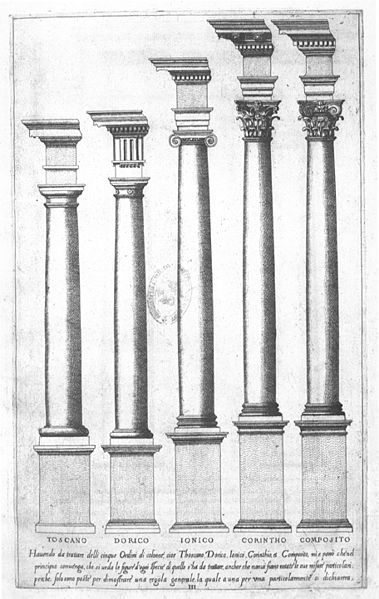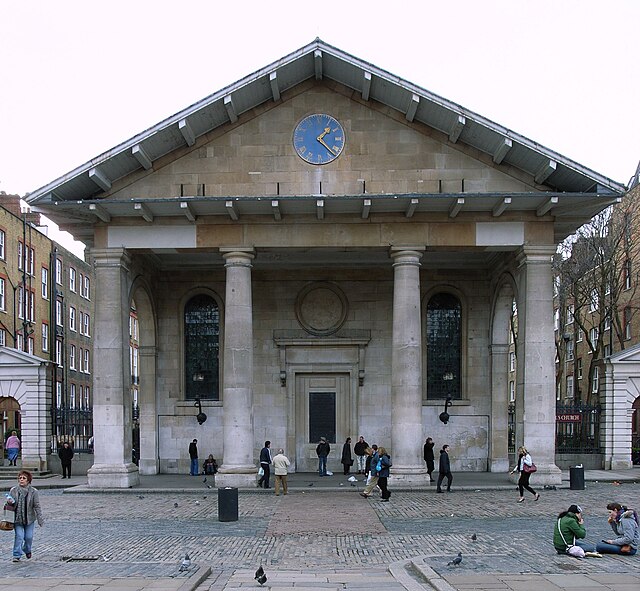The Tuscan order is one of the two classical orders developed by the Etruscans, the other being the composite order. It is influenced by the Doric order, but with un-fluted columns and a simpler entablature with no triglyphs or guttae. While relatively simple columns with round capitals had been part of the vernacular architecture of Italy and much of Europe since at least Etruscan architecture, the Romans did not consider this style to be a distinct architectural order. Its classification as a separate formal order is first mentioned in Isidore of Seville's Etymologies and refined during the Italian Renaissance.
The Tuscan order illustrated in Regola delli cinqve ordini d'architettvra (1563), by Jacopo Barozzi da Vignola
The five orders, engraving from Vignola's Regola delli cinque ordini d'architettura, 1562; Tuscan on the left.
St Paul's, Covent Garden by Inigo Jones (1633), "the handsomest barn in England"
Roman Tuscan and Ionic columns of the Amphitheatre of Catania, Catania, Italy, unknown architect, c.2nd century AD
The Composite order is a mixed order, combining the volutes of the Ionic order capital with the acanthus leaves of the Corinthian order. In many versions the composite order volutes are larger, however, and there is generally some ornament placed centrally between the volutes. The column of the composite order is typically ten diameters high, though as with all the orders these details may be adjusted by the architect for particular buildings. The Composite order is essentially treated as Corinthian except for the capital, with no consistent differences to that above or below the capital.
Illustration of the Composite order, made in 1695 and kept in Deutsche Fotothek
The Five Orders illustrated by Vignola, 1641
Unlike the Composite capital, this Ionic capital has a different appearance from the front and sides
Roman Composite columns of the Library of Celsus, Ephesus, Turkey, unknown architect, c.110 AD








